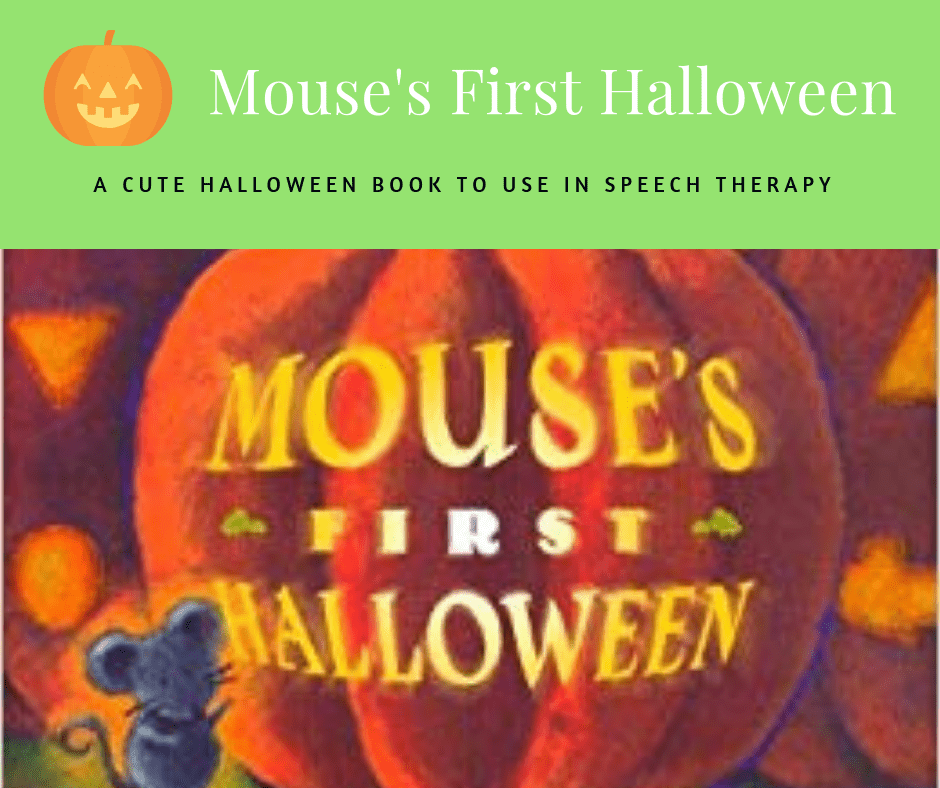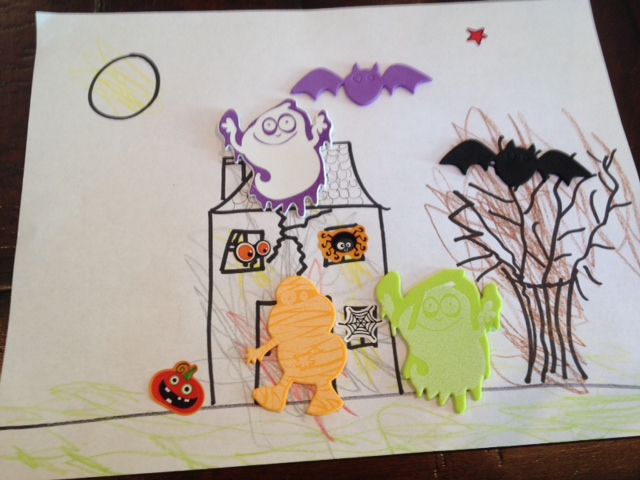Sign Up For Our E-Blast To Receive Information on our Books, Speech Therapy materials and our latest freebies!
Mouse’s First Halloween: A Halloween Book to Use in Speech Therapy

On my daughter’s first Halloween, she received the book titled Mouse’s First Halloween. Since she was only 3 months old and a little too young to really appreciate this adorable book, I, like any good speech language pathologist, used it during my sessions with my clients. My preschoolers LOVED It! (2014 Update – Kerri, who is almost 26 months old – LOVES IT! 2015 Update – Kerri, still loves it.)
Amazon Affiliate links included.
Here’s why I like Mouse’s First Halloween so much:
Story Line: It’s a simple story with a predictable chain of events. The mouse eventually learns that what may seem scary, may not be so scary after all (especially on a “spooky night” like Halloween). Since the narrative is basic, it provides a nice platform to address feelings and fears with your child.
Illustrations: The images are straightforward and quite large. As a result, focusing is easier for the child because his or her attention is not competing with too many small details. The pictures are also delightful. With bats and jack-o-lanterns smiling, nighttime during the Halloween season is not depicted as creepy or frightening. Another great aspect about the illustrations is that they complement the storyline. When the mouse hears, “Rustle! Rustle! Rustle!”, and wonders, “What could it be?” the observant reader can make out leaves in the corner of the page. Since the mystery items are not revealed until the reader turns the page, there are many opportunities for the child to pay close attention and predict what comes next.
Here’s a fantastic youtube video of a librarian reading Mouse’s First Halloween to a group of young children. They’re a little restless when the reading first begins (nothing too out of the ordinary) but as you’ll soon see, the librarian does a fantastic job of pulling them into the book. The children were engrossed and enjoyed predicting what comes next.
Onomatopoeia – Plop! Thump! Flip! Onomatopoeia is a literary device used to describe a sound or to give emphasis to an action. Most children’s nursery rhymes are loaded with them (e.g. Old McDonald – “there a moo, here a moo” and Twinkle Twinkle Little Star). There are so many amusing sound effects in this book! And, believe me, your child will want to try them. Each time the mouse squeaks “Eeek!” the reader can squeak “Eeek!” in a high pitched voice. Children who may not even be talking will enjoy making these sound effects. Those with more developed language can expand their vocabulary by learning how squeaking is different from talking, yelling, and crying.
Repetitive words and phrases: A few phrases repeat throughout this book (e.g., “What could it be?”, “That’s all. Not so scary after all.”). Repetitive lines help to develop oral language and emergent literacy skills. Since these repetitive lines are fun, it’s instinctual to incorporate playful gestures and mannerisms when saying or reading them aloud. The reader can easily accompany the repeated phrase, “What could it be?” by putting his or her hands up as if asking a question. The repetitive line, “That’s all. Not so scary after all” can be accompanied with a gentle head shake or finger wag.
Print: Children acquire literacy by progressing through a series of developmental stages. Typically developing children, from ages 3 to even 6 years, are usually at the emergent literacy stage. This is a perfect book for targeting print awareness because when the mystery objects are revealed, the font changes! If you’re interested in increasing your preschooler’s print awareness, then talk about the print and point to the print. Comments can include: “This letter is in your name”, “Here’s a picture of a mouse and this word is mouse.” Ask questions like, “What do you think this says?” and “Where should I start reading?” For more print awareness ideas please see my book:
Hope these tips have been helpful.
To see some more of my favorite Halloween themed books for speech therapy, please read:
My Favorite Halloween Books to Use in Speech Therapy
This is a simple but fun following directions with stickers activity for Halloween – click here.
Kimberly Scanlon, M.A. CCC-SLP is a speech language pathologist, an author and a mother. As the owner of Scanlon Speech Therapy, LLC, a unique boutique practice in Bergen County, Kimberly embraces individuality and treats the whole person. Her goal is to spread compassion, hope, and some speech, language and literacy tips one moment, one person at a time. Her first book, My Toddler Talks: Strategies and Activities to Promote Your Child’s Language Development and her her second book, Learning to Read is a Ball
are available for purchase at online at Amazon and Barnes and Noble.



